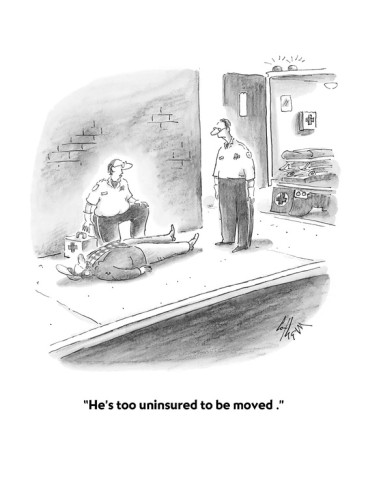 According to three new studies, the health law has in its first year reduced the number of uninsured adults by between 8 million and 11 million, and the majority of enrollees report satisfaction with their plans. The numbers don’t all match, and health care experts say they’re not precise enough to give more than a general idea of the trend. However, millions of people who didn’t have health insurance before the Affordable Care Act have gained it since last fall.
According to three new studies, the health law has in its first year reduced the number of uninsured adults by between 8 million and 11 million, and the majority of enrollees report satisfaction with their plans. The numbers don’t all match, and health care experts say they’re not precise enough to give more than a general idea of the trend. However, millions of people who didn’t have health insurance before the Affordable Care Act have gained it since last fall.
A survey by the Commonwealth Fund found that 9.5 million fewer adults are uninsured now than at the beginning of the Obamacare enrollment season. The Urban Institute’s Health Reform Monitoring Survey found a similar drop, with 8 million adults gaining coverage. And Gallup-Healthways survey reported that the uninsured rate has fallen to 13.4 percent of adults, the lowest level since it began tracking health coverage in 2008.
Each comes to a similar conclusion - Nationwide, roughly 1 in 4 people who were uninsured last fall now have received coverage, representing a significant first step toward Obamacare's goal of near-universal coverage. The biggest expansion of coverage came in California, where the percentage without health insurance has been cut in half, from 22% a year ago to 11% by early June, the Commonwealth Fund survey indicated.
Other positive findings include:
About 6 in 10 said they had visited a doctor or hospital or filled a prescription using their new coverage. Nearly two-thirds of those people said they would not have been able to do that previously.
More than half — 58% — said they were better off with their new coverage, compared with 9% who reported they were worse off. About 1 in 4 said the new coverage had not had an effect one way or the other.
About 1.2 million people have enrolled and paid their initial premiums for private health plans through the state's insurance exchange, Covered California. Many other individuals bought policies outside the exchange.
Nationally, adults younger than 35 have accounted for the sharpest increases in coverage, according to both Commonwealth and Gallup data.
But the new studies point to some significant hurdles.
Most notably, the biggest improvements in insurance coverage have taken place in the District of Columbia and the 25 states that have expanded their Medicaid programs.
That means the remaining uninsured Americans increasingly are concentrated in states that have declined to expand Medicaid — primarily Southern and Midwestern states with Republican-controlled governments that have been hostile to the new law and, in many cases, have tried to impede its implementation. That political resistance could be a major factor in holding down enrollments in the next couple of years.











